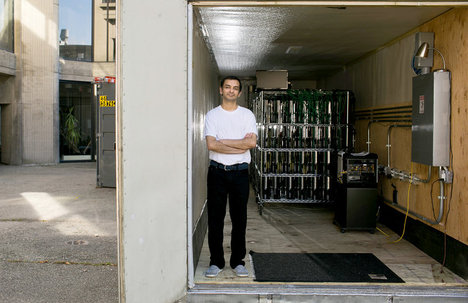(p. D5) Scientists have long recognized that the diets of our ancestors went through a profound shift with the addition of meat. But in the September issue of The Quarterly Review of Biology, researchers argue that another item added to the menu was just as important: carbohydrates, bane of today’s paleo diet enthusiasts. In fact, the scientists propose, by incorporating cooked starches into their diet, our ancestors were able to fuel the evolution of our oversize brains.
. . .
Cooked meat provided increased protein, fat and energy, helping hominins grow and thrive. But Mark G. Thomas, an evolutionary geneticist at University College London, and his colleagues argue that there was another important food sizzling on the ancient hearth: tubers and other starchy plants.
Our bodies convert starch into glucose, the body’s fuel. The process begins as soon as we start chewing: Saliva contains an enzyme called amylase, which begins to break down starchy foods.
Amylase doesn’t work all that well on raw starches, however; it is much more effective on cooked foods. Cooking makes the average potato about 20 times as digestible, Dr. Thomas said: “It’s really profound.”
. . .
Dr. Thomas and his colleagues propose that the invention of fire, not farming, gave rise to the need for more amylase. Once early humans started cooking starchy foods, they needed more amylase to unlock the precious supply of glucose.
Mutations that gave people extra amylase helped them survive, and those mutations spread because of natural selection. That glucose, Dr. Thomas and his colleagues argue, provided the fuel for bigger brains.
For the full story, see:
Carl Zimmer. “MATTER; For Evolving Brains, a ‘Paleo’ Diet of Carbs.” The New York Times (Tues., AUG. 18, 2015): D5.
(Note: ellipses added.)
(Note: the online version of the story has the date AUG. 13, 2015.)
The academic article summarized in the passages above, is:
Hardy, Karen, Jennie Brand-Miller, Katherine D. Brown, Mark G. Thomas, and Les Copeland. “The Importance of Dietary Carbohydrate in Human Evolution.” The Quarterly Review of Biology 90, no. 3 (Sept. 2015): 251-68.

